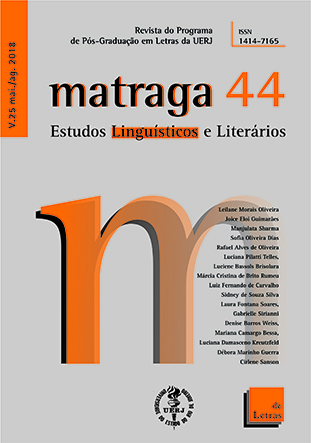Literacy models underlying in a teaching material of Portuguese as a Welcoming Language
DOI:
https://doi.org/10.12957/matraga.2018.33979Keywords:
Literacy, Teaching material, Portuguese as a Wel¬coming Language.Abstract
In view of the necessity of improving Portuguese as a Welcoming Language (PLAc) teaching, in this work we analyze the underlying concepts of reading and writing in tasks and activities of Portas Abertas (REINOLDES; MANDALÁ; AMADO, 2017), thinking of how students are prepared to the social uses of writing and reading by this teaching material. In the analysis methodology, we defined criteria which concern the aspects of didactic material, such as the selected discursive genres and their treatment in tasks that guide the work with the text, from the orientations of Bulla, Lemos and Schlatter (2012). It was possible to identify, by focusing on one of the didactic units, tasks aligned with the autonomous model of literacy, as well as other aligned with the ideological model of literacy (KLEIMAN, 1995; STREET, 2003), results that highlight the positive points of the teaching material, and, indicate aspects to be potentialized through reformulations of activities and creation of tasks. From the critical reading of this didactic material, we emphasize the importance of Portuguese as a Welcoming Language teaching materials being followed by teacher’s materials, with a view to helping the teacher to conciliate the mishaps that are found in this context, as well as to promote a teaching practice concerned with citizen participation of the forced imigrants.Downloads
Published
How to Cite
Issue
Section
License
Authorization
Matraga – Scientific Journal of the Post-graduate Program in Arts and Humanities of UERJ is authorized to publish the article submitted here, if it is accepted for online publication. It is attested that the contribution is original, that it is not being submitted to another publisher for publication, and that this statement is the expression of truth.
The works published in Matraga's virtual space – Scientific Journal of the Post-graduate Program in Arts and Humanities of UERJ will be automatically transferred, and your copyright is reserved to Matraga. Its reproduction, in whole or in part, is conditional on the citation of the authors and the data of the publication.

Matraga uses license Creative Commons - Attribution-Non-Commercial 4.0 International.





